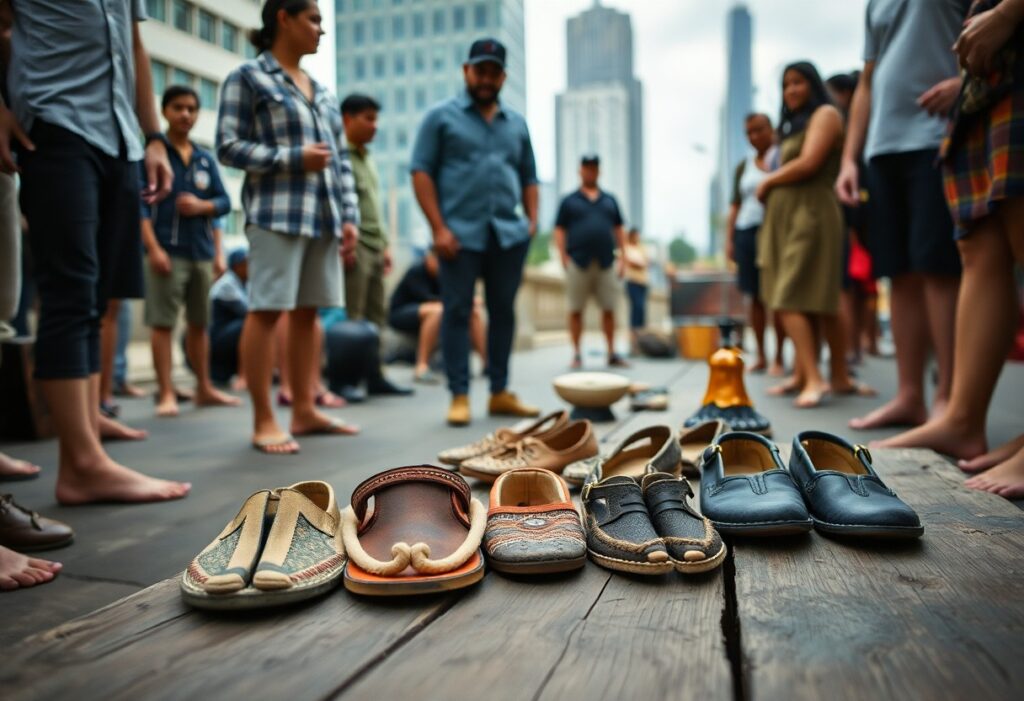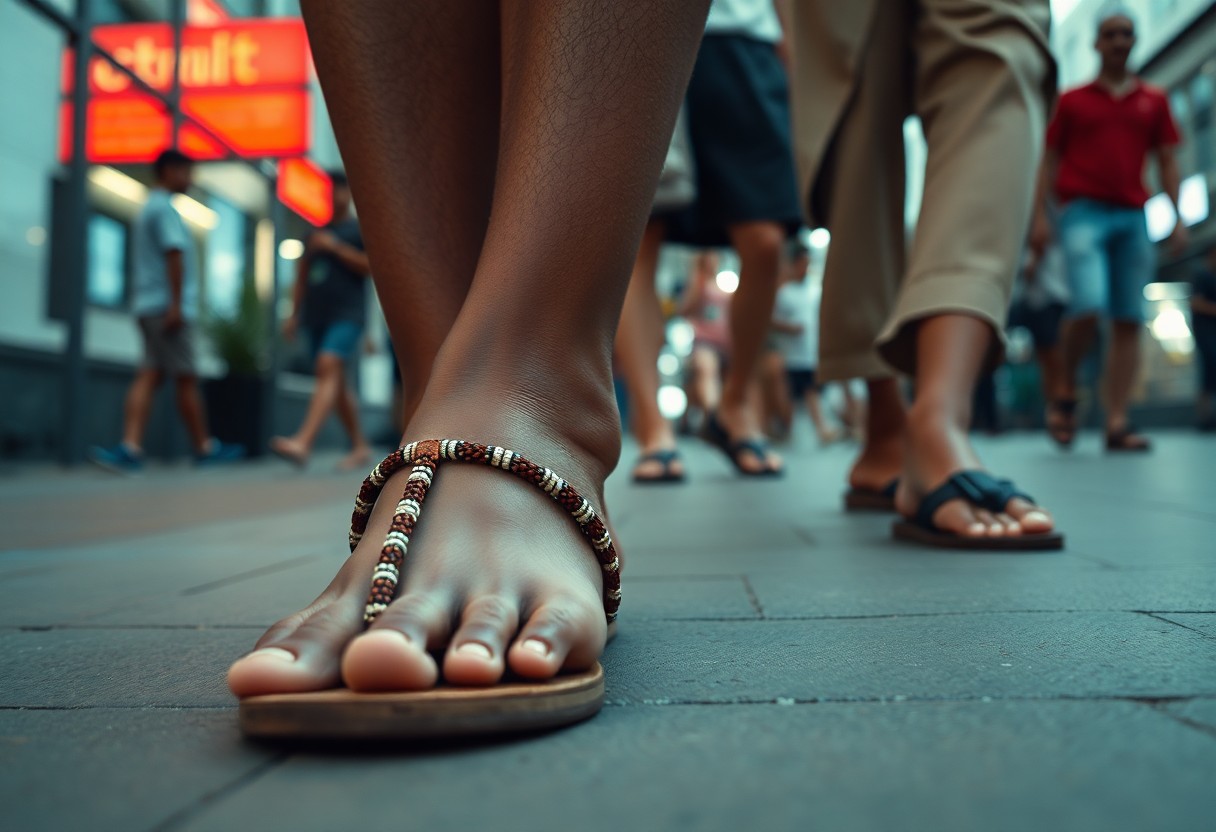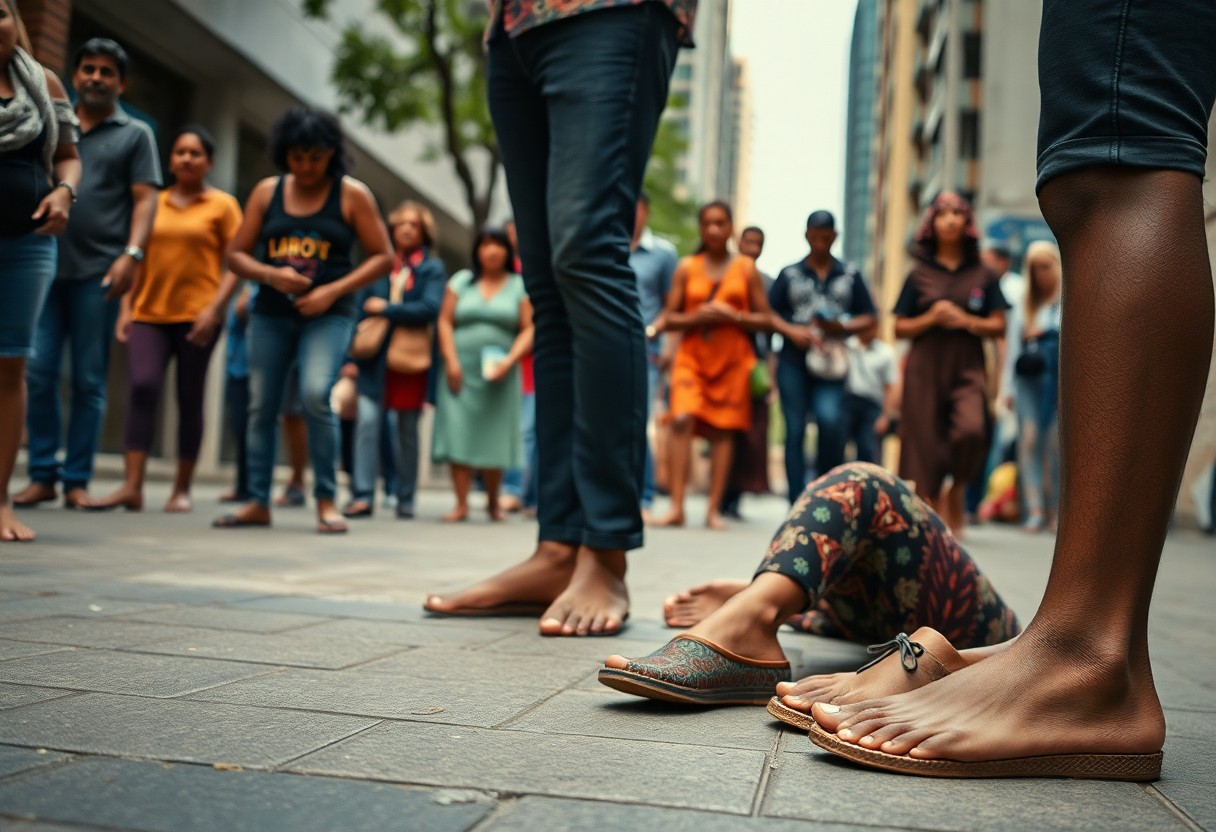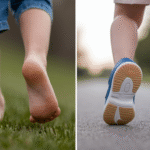
Delving into the realm of barefoot footwear through the prism of cultural anthropology reveals fascinating stories that link the deep-rooted traditions of Aboriginal cultures with contemporary urban environments. This captivating journey allows you to explore how cultural beliefs and practices surrounding minimalist footwear influence our perceptions of comfort, our connection to the earth, and various avenues for personal expression. By grasping these concepts, you not only deepen your understanding of footwear's role in daily life but also encourage a thoughtful reconsideration of how the shoes you choose can reflect significant cultural meanings and aspects of personal identity.

Bridging the Gap Between Ancient Footwear Traditions and Modern Innovations
The present-day footwear market is an intricate tapestry that intricately weaves together ancient customs and modern innovations, cultivating a growing appreciation for barefoot footwear. This journey not only pays tribute to traditional indigenous techniques but also adapts them seamlessly to fit your contemporary lifestyle. By recognising the significance of historical practices, you can uncover an exciting fusion of cultural respect and practical aesthetics within your daily footwear choices, thereby enriching your personal style while honouring the rich tapestry of the past.
Examining Indigenous Foot Conditioning Techniques Versus Modern Practices
Indigenous cultures across the globe have employed specific conditioning techniques designed to strengthen their feet for a variety of terrains. Practices such as walking barefoot on different surfaces have fortified the arches and muscles in ways that many contemporary interpretations often fall short of replicating. In today’s world, while you may encounter minimalist footwear designed to simulate these effects, they seldom provide the authentic experience of genuine contact with the earth, a crucial element for developing natural foot strength and flexibility that is vital for overall foot health.
The Evolution of Military Footwear: From Ancient Caligae to Modern Tactical Boots
The narrative of military footwear is a captivating tale of adaptation and innovation, evolving from the robust Roman caligae, which were designed for durability and traction, to the modern tactical boots that blend protection with agility and comfort. An exploration of these transformations highlights a consistent principle: in treacherous environments, functionality is paramount, necessitating equipment that enhances endurance and mobility for soldiers.
The Roman caligae epitomised a sophisticated solution to military necessities, crafted from resilient leather and featuring an open-toe design for optimal ventilation. This ancient footwear was equipped with thick soles that effectively absorbed shock and provided essential traction, critical in combat situations. Fast forward to contemporary times, and tactical boots are constructed using advanced materials such as Kevlar and waterproof membranes, enhancing both durability and performance. These modern designs incorporate padded collars and sophisticated cushioning systems to reduce the risk of injuries during intense military activities. Recognising the heritage of military footwear allows you to appreciate how these historical styles have paved the way for contemporary innovations, merging heritage, functionality, and cutting-edge technology to meet the evolving demands of today’s warriors.

Examining the Disparity Between Urban and Rural Footwear Choices
The variations in footwear preferences between urban and rural environments unveil significant cultural and practical differences. Urban locales typically prioritise style and brand identity, whereas rural areas often focus on practicality and durability. As barefoot footwear gains traction, urban inhabitants increasingly adopt its minimalist design as both a fashion statement and a means to perceived health benefits. In contrast, individuals residing in rural regions may display scepticism, shaped by traditional norms and the practical requirements of their surroundings.
Identifying Emerging Trends in Urban Acceptance of Barefoot Footwear
In urban areas, a noticeable shift towards the acceptance of barefoot footwear is taking place, with adoption rates steadily rising over the past decade. This trend is fuelled by various factors, including heightened health awareness, an increasing interest in natural movement, and the influence of fitness trends such as yoga and running. Surveys indicate that approximately 35% of urban residents have actively sought out barefoot-style shoes, reflecting a cultural shift towards embracing innovative body mechanics.
Investigating Gender-Specific Barriers to Barefoot Footwear Adoption: Who Leads the Trend?
Gender dynamics play a crucial role in shaping the acceptance of barefoot footwear, with distinct motivations influencing the choices made by men and women. Women frequently encounter greater societal pressures related to fashion and aesthetics, which may impede their willingness to embrace minimalist styles. Conversely, men may find themselves more motivated by the performance and health benefits associated with these shoes, leading to higher adoption rates among male demographics.
Further examination into the gendered dimensions of barefoot footwear adoption reveals that societal expectations substantially impact women’s choices. Women often navigate a landscape where ideals of beauty and fashion overshadow practical health benefits. For instance, research shows that approximately 45% of men in urban settings lean towards barefoot shoes, compared to only 30% of women. Female consumers frequently grapple with the balance between aesthetics and functionality, making them more cautious as they evaluate the visual appeal of barefoot footwear against their need for comfort and support. By empowering women through targeted awareness initiatives and showcasing stylish barefoot options, the willingness to adopt this trend could rise, potentially reshaping urban footwear narratives and promoting inclusivity across genders.

Groundbreaking Innovations Shaping the Future of Barefoot Footwear
As the desire for barefoot footwear continues to escalate, revolutionary technologies are set to redefine your approach to comfort and performance. Advances in materials science and tailored fitting techniques will not only enhance functionality but also personalise your walking experience, merging traditional wisdom with contemporary design principles. You are stepping into an era where your footwear becomes as distinctive as the journey it accompanies, resulting in improved comfort and performance.
Achieving Customisation Through 3D Scanning: Crafting Your Ideal Fit
The emergence of 3D scanning technology is transforming the customisation of barefoot footwear, allowing for an exact fit that aligns with your unique foot shape. Instead of relying on standard sizes, your shoes can be meticulously tailored to match the contours of your feet, significantly enhancing comfort and reducing the risk of injury. Custom-fit options will not only elevate your walking experience but also make barefoot shoes accessible to individuals with a range of foot shapes and sizes.
Integrating Smart Sensors to Propel Footwear Technology Forward
The incorporation of smart sensors into barefoot footwear is poised to revolutionise the industry by embedding technology directly into the soles. These innovative features can track various metrics, from distance travelled to foot pressure, equipping you with valuable insights to optimise your walking or running routines. With real-time data at your fingertips, you can adjust your activities to maximise performance while ensuring safety.
Imagine having access to real-time analytics as you walk or run. Smart sensors can monitor your gait, alerting you to any irregularities that could lead to injury. Some forward-thinking brands are already developing footwear capable of assessing your foot's impact on different surfaces, offering personalised recommendations for style or cushioning adjustments on the move. This groundbreaking integration blends advanced technology with the traditional barefoot ethos, ensuring you maintain a natural stride while leveraging the latest advancements in wearable technology. The potential for enhancing sports performance, rehabilitation, and everyday comfort is boundless, fundamentally reshaping how you interact with your surroundings with each step.
Reflecting on the Evolution of Barefoot Footwear
Your exploration of the cultural anthropology surrounding barefoot footwear unveils a rich narrative intricately woven from the threads of Aboriginal traditions to contemporary urban practices. By embracing the principles of natural movement and fostering a connection to the earth, you gain insights into how this footwear philosophy transcends mere fashion, profoundly impacting lifestyle choices and community values. As you contemplate these diverse perspectives, consider how your footwear selections can embody and promote a deeper understanding of cultural heritage and adaptability in the modern world.
The Article Cultural Anthropology of Barefoot Footwear: From Aboriginal Traditions to Modern Urban Adoption appeared first on My Shoes Finder
The Article Cultural Anthropology of Barefoot Footwear: Traditions to Today Was Found On https://limitsofstrategy.com







